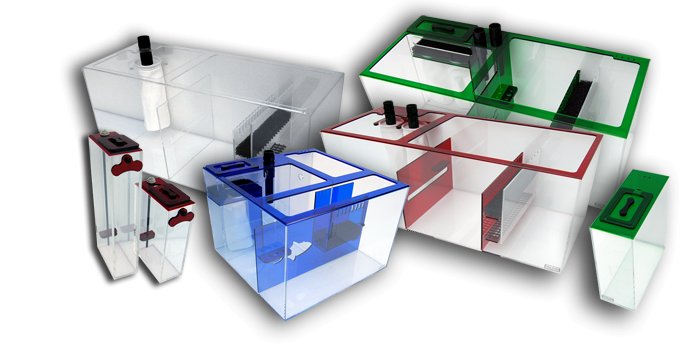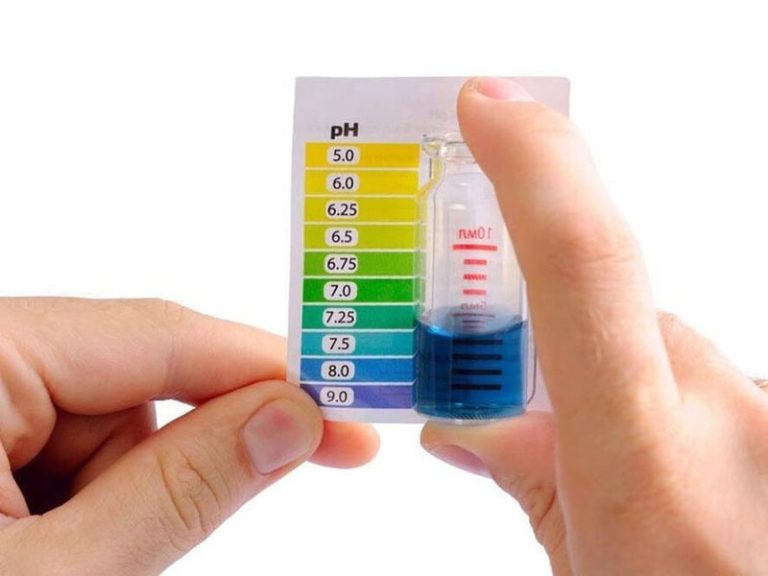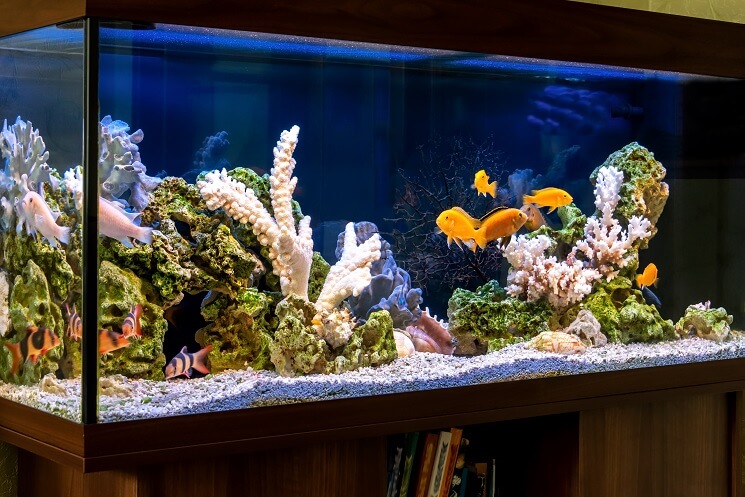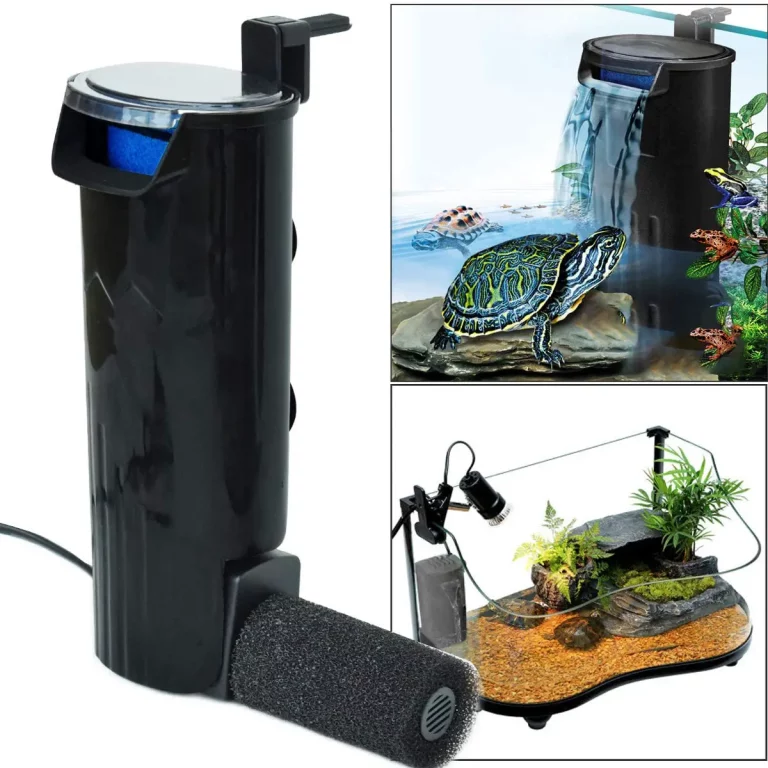Ultimate Guide: Setting Up a Freshwater Sump Tank Like a Pro
To set up a sump tank for freshwater, first, gather all necessary materials and tools. Then, install the overflow box on the display tank and connect it to the sump.
Finally, adjust the water level and install appropriate equipment for filtration and circulation. Setting up a sump tank for freshwater can be a great addition to any aquarium system. By providing additional filtration and increasing water volume, a sump tank helps maintain stable water conditions and improve overall health of aquatic organisms.
Although it may seem daunting at first, the process can be broken down into simple steps that any hobbyist can follow. In this article, we will guide you through the process of setting up a sump tank for your freshwater aquarium.

Credit: www.youtube.com
Why A Freshwater Sump Tank Is The Best Choice For Your Aquarium
Understanding The Unique Advantages Of A Freshwater Sump Tank Over Traditional Aquariums
If you’re thinking of setting up a new aquarium, a freshwater sump tank might be the best choice for you. Here are some reasons why:
- A sump tank can increase your aquarium’s water volume, which can help maintain water stability and quality.
- The extra space provided by a sump tank means that you won’t need to clutter up your main aquarium with equipment like heaters, protein skimmers, and filters.
- Because the equipment operates outside of the main aquarium, it’s easier to maintain and clean.
- A sump tank allows you to customize your aquarium’s filtration set up to suit your specific needs.
Factors To Consider Before Setting Up A Freshwater Sump Tank
If you’ve decided that a freshwater sump tank is the way to go, there are a few factors you’ll need to consider before you get started:
- Choose the appropriate size sump tank based on the size of your main aquarium. The sump should be large enough to hold all of your equipment and provide enough water volume to increase stability.
- Consider the location of the sump tank, as you’ll need to run plumbing to and from your main aquarium.
- Determine what kind of equipment you’ll need to purchase, such as a return pump, heaters, protein skimmers, and filters. You’ll want to take into account the cost of this equipment, as well as any ongoing maintenance requirements.
With these factors in mind, you’ll be well on your way to setting up a successful freshwater sump tank for your aquarium.
Planning Your Freshwater Sump Tank Setup
Choosing The Right Tank Size, Shape, And Materials For Your Freshwater Sump Tank
Deciding on the size, shape, and materials for your freshwater sump tank requires careful consideration. Here are the key points to keep in mind:
- Tank size: The size of your sump tank depends on the amount of water your main tank can hold. It’s recommended to have a sump tank that can hold 10% to 15% of the main tank’s water volume. If you have a 50-gallon main tank, then a sump tank that holds 5-7 gallons of water is ideal.
- Tank shape: While most sump tanks are rectangular, you can choose a tank shape that best fits the available space and your preferences. Keep in mind that a tank with a greater surface area (as opposed to a taller tank) is better for gas exchange and oxygenation.
- Tank materials: Your sump tank should be made of non-toxic, durable, and easy-to-clean materials. Glass and acrylic are the most common options, with acrylic being lighter and less prone to breaking than glass.
Essential Equipment You’Ll Need For Your Freshwater Sump Tank Setup
There are a few essential pieces of equipment you’ll need to ensure a successful freshwater sump tank setup. Here’s what you’ll need:
- Aquarium sump: Of course, you’ll need a sump tank! You can buy a sump tank or build your own, but the most important thing is to make sure it’s the right size and material for your needs.
- Pump: A water pump is necessary to move water from the main tank into the sump tank and back again. Choose a pump that can handle the amount of water you need to move, with a flow rate of at least 3-5 times the volume of the tank.
- Protein skimmer: A protein skimmer removes organic waste and toxins from the water in your sump tank. Choose a skimmer that’s the right size for your tank, with a flow rate that matches your pump.
- Heater: A heater helps maintain a stable temperature in your sump tank, which is essential for your fish and other aquatic life. Choose a heater that’s the right wattage for your tank size, with a built-in thermostat.
- Filter media: You’ll need some filter media to help remove waste and debris from your sump tank’s water. Choose filter media that’s appropriate for your tank and easy to clean, such as foam or plastic balls.
Calculating The Right Amount Of Water For Your Freshwater Sump Tank
Getting the right amount of water in your sump tank is crucial for the health of your fish and aquatic life. Here are the key points to keep in mind:
- Water volume: As we mentioned earlier, your sump tank should hold 10% to 15% of your main tank’s water volume. This ensures that there’s enough water to dilute waste and maintain proper filtration.
- Water level: The water level in your sump tank should be set so that the water level in your main tank remains constant. It’s recommended to keep the water level in your sump tank 2-3 inches below the overflow box.
- Overflow rate: The overflow rate is the rate at which water enters your sump tank from your main tank. Aim for an overflow rate of 200 to 300 gallons per hour (gph) for each inch of overflow.
By taking the time to plan your freshwater sump tank setup, you’ll create a healthy and thriving environment for your fish and other aquatic life. With the right size, shape, and materials, essential equipment, and accurate water calculations, your sump tank will be a valuable addition to your aquarium system.
Filling Your Freshwater Sump Tank: Step-By-Step Guide
Ensuring A Healthy And Safe Environment For Your Fish By Preparing The Water Quality
Before filling your sump tank with water, it is necessary to prepare the water quality. Ensure that your tank’s ph level, temperature, salinity level, and hardness are all appropriate for the fish you plan to keep. This step ensures that your fish will thrive in a healthy and safe environment.
Here are some key points to ensure the best water quality for your fish:
- Test the ph levels of water that will then fill your sump tank using a ph testing kit or ph meter. The standard ph range in freshwater aquariums should be between 6.8-7.8.
- Install a thermometer in the sump tank to monitor temperature. Ideal temperature for freshwater fish is between 72 and 78°f.
- Hardness of water should be soft to slightly hard for most fish.
- Adding a de-chlorinating agent will help ensure there is no chlorine, chloramine, or hydrogen in the water.
Setting Up A Water Pump, Overflow, And Return System
After you have prepared the water, it’s time to set up your sump tank with water pump, overflow, and return system. This equipment is crucial, as it stabilizes the water level, assists filtration, and aerates the water.
Here are some key steps in doing your initial system setup:
- First, position the water pump close to the sump tank so that it can efficiently collect water.
- Install an overflow box on the sump tank. This step ensures that your sump does not overflow when pumping water.
- Start laying out the piping and plumbing system. Be sure to attach your gate valves, ball valves, and union fittings for proper control of the water flow.
- Then, attach the return pipe from the sump pump back into your primary tank.
Adding Substrate, Plants, And Decorations To Your Freshwater Sump Tank
Adding substrate, plants, and decorations to your freshwater sump tank enhances the aesthetics and provides a natural habitat for your fish. Adding substrate creates natural breeding grounds for beneficial bacteria, essential in any aquarium, and also can help with chemical filtration.
Here are some key steps to consider:
- Rinse the gravel or substrate before adding it into the sump tank.
- Use a fine layer of substrate as a bed for plants that are going to be rooted in the tank.
- After adding substrate, add synthetic or live plants. Live plants are a natural filtration system, providing a source of oxygen and reducing nitrate and phosphate levels.
- Finally, add decorations such as driftwood, stones, or other non-toxic materials to enhance the tank’s overall appearance.
Initializing Biofilter And Fishless Cycling The Aquarium Through The Sump
The biofilter is essential for maintaining the aquarium ecosystem. It eliminates harmful particles, such as ammonia and nitrites, produced by fish waste, converting them into less harmful nitrate, only achievable when the aquarium goes through its initial stage of “fishless cycling.
“
Here are some important key points, to be sure you properly ‘initialize’ your biofilter and ‘cycle’ the aquarium:
- Add ammonia drops to the aquarium and wait for a few days for the bacteria to grow on the surface of the substrate.
- Periodically check the water quality using a test kit.
- Once the biofilter is established, it’s time to start adding fish gradually to your tank. But, be sure not to overstock your tank in the initial stage.
- Never add fish immediately after filling your sump tank with water unless you follow the fishless-cycling procedure.
By following these steps, you can establish a healthy sump tank for your fish. Happy fishkeeping!
Maintaining Your Freshwater Sump Tank
Caring For Your Fish, Plants, And Other Aquatic Life In The Freshwater Sump Tank
Taking care of your fish, plants, and other aquatic life in your freshwater sump tank is essential. These tips can help you ensure that all the inhabitants in your tank are healthy and happy.
- Regularly check your aquarium’s water parameters, including ph level, ammonia level, and temperature.
- Ensure that your fish are not overcrowded and have enough swimming space.
- Feed your fish with a balanced and healthy diet.
- Monitor your plants’ growth and trim them as required.
- Observe your aquatic life for any signs of illness or disease.
Regular Maintenance Tasks Such As Water Changes And Cleaning The Sump
Routine maintenance is essential to keep your freshwater sump tank in optimal condition. Here are some regular maintenance tasks to include in your routine:
- Schedule routine water changes to keep the tank clean and clear of debris.
- Clean the sump tank and remove any buildup of debris or sludge on a regular basis.
- Inspect and clean the filter to ensure it is functioning correctly.
- Monitor the water level in the sump and top up if necessary.
Troubleshooting Common Problems That Might Occur In A Freshwater Sump Tank
Sometimes, despite all your best efforts, problems can still arise in your freshwater sump tank. Here are some common issues you might encounter and how to troubleshoot them:
- Algae growth: Control algae levels by providing limited light, regular water changes, and maintaining the tank’s nutrient levels.
- Cloudy water: This is often an indicator of poor water quality, so perform a water change immediately, and clean the sump tank and filter.
- Temperature fluctuations: Ensure that your tank’s temperature is consistent. Monitor the thermostat of your heating system regularly.
- Fish illness: Feed your fish a healthy diet, monitor water quality, and isolate sick fish immediately.
By taking time to care for your fish, regularly maintaining your freshwater sump tank, and troubleshooting common problems, you’ll have a healthy, thriving aquatic ecosystem in your home.
Advanced Tips And Tricks For Freshwater Sump Tank Owners
Upgrading And Customizing Your Freshwater Sump Tank With Additional Equipment
As a freshwater sump tank owner, upgrading and customizing your tank with additional equipment can drastically enhance your tank’s performance. Some equipment can assist in improving water quality, while others can enhance circulation and filtration.
Here are some key points to keep in mind when upgrading and customizing your sump tank:
- Consider adding a protein skimmer to your tank setup to remove any organic waste and debris before it has a chance to break down and release harmful toxins into the water.
- Adding a refugium to your sump tank can provide an ideal environment for beneficial microorganisms and macroalgae to thrive, which can help to enhance water quality and nutrient control.
- Adding a uv sterilizer to your setup can assist in removing harmful pathogens and free-floating algae from the water column, which can further enhance water quality.
- Consider adding a chiller to your sump tank if you live in an area with high temperatures, as this can help to maintain a consistent water temperature and reduce the risk of heat stress for your aquatic pets.
Optimizing The Performance Of Your Freshwater Sump Tank For Maximum Efficiency
Optimizing the performance of your sump tank can improve filtration and circulation, enhance water quality, and ultimately lead to a healthier aquatic environment for your pets. To optimize your sump tank performance, consider the following:
- Make sure your sump is sized appropriately for your tank to ensure proper filtration and water circulation. A good rule of thumb is a sump that is at least 30% of the size of your main tank.
- Position your return pump in a way that will optimize water flow and avoid creating dead spots in your tank. Dead spots, areas where there is no water flow, can lead to the accumulation of debris and harmful toxins.
- Clean your sump tank regularly to prevent the buildup of organic waste and debris, which can impact water quality and lead to nutrient imbalances.
- Check your equipment regularly to ensure everything is functioning as intended. Replacing worn or damaged equipment can prevent malfunctions and save you money in the long run.
Implementing Advanced Techniques For Managing Water Chemistry, Circulation, And Filtration
Managing water chemistry, circulation, and filtration are essential components of maintaining a healthy sump tank environment. Here are some advanced techniques to consider:
- Utilize a dosing pump to introduce trace elements and other supplements to the water, which can assist in maintaining a stable and balanced ecosystem.
- Consider installing an automatic top-off system to maintain consistent water levels in your sump tank. Fluctuating water levels can cause stress for your aquatic pets and impact water quality.
- Implement a reverse photocatalytic oxidation system (rpo) or similar technology to reduce the number of pathogens and volatile organic compounds in your sump tank.
- Consider adding live rock or live sand to your sump tank, which can provide an ideal environment for beneficial bacteria to thrive and further enhance water quality.
Frequently Asked Questions On How To Set Up A Sump Tank For Freshwater
What Is A Sump Tank In A Freshwater Aquarium Setup?
A sump tank, also known as an overflow system, is a separate tank that houses equipment and filters the water from the main aquarium.
What Are The Benefits Of Setting Up A Sump Tank?
Sump tanks can increase the water volume and oxygenation in the tank, while helping to maintain water quality by hosting filtration and protein skimmers.
How Do I Install A Sump Tank In My Aquarium System?
The installation process involves setting up a new tank below the main aquarium and connecting it with plumbing fixtures that enable the water to flow in and out of the sump tank.
What Equipment Do I Need For A Sump Tank Setup?
In addition to the overflow box and plumbing fixtures, you’ll need a return pump and a protein skimmer, along with any additional equipment for filtration or heating that you require.
Can I Set Up A Sump Tank In A Small Freshwater Aquarium?
A sump tank can be installed in an aquarium of any size, but you may need to adjust the size and capacity of the tank and equipment to suit smaller tanks.
Conclusion
To sum it up, setting up a sump tank for freshwater is not as complicated as it may seem. It requires careful planning, proper equipment, and patience. By following the steps outlined in this article, you can create a healthy and thriving aquatic environment for your freshwater fish.
Remember to regularly monitor and maintain your sump tank to ensure its optimal performance. Overall, investing in a sump tank is a beneficial choice for any aquarium enthusiast, as it provides improved filtration, increased water volume, and enhanced water quality.
So, gather your supplies, roll up your sleeves, and start setting up your freshwater sump tank today!






